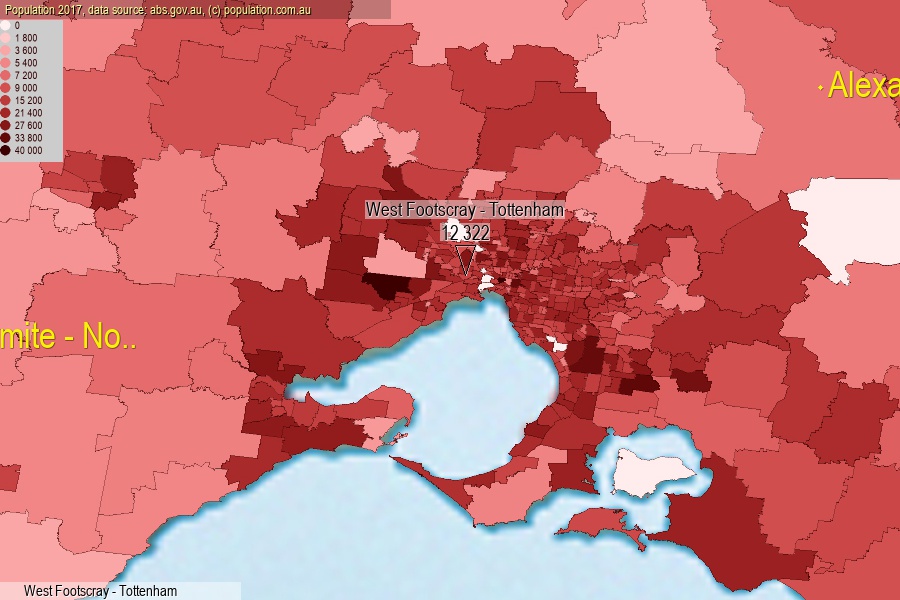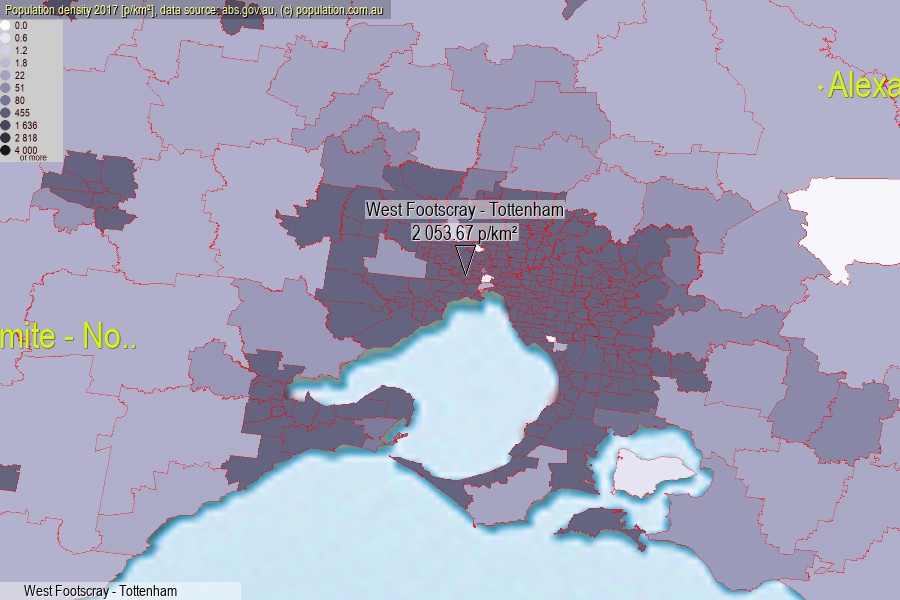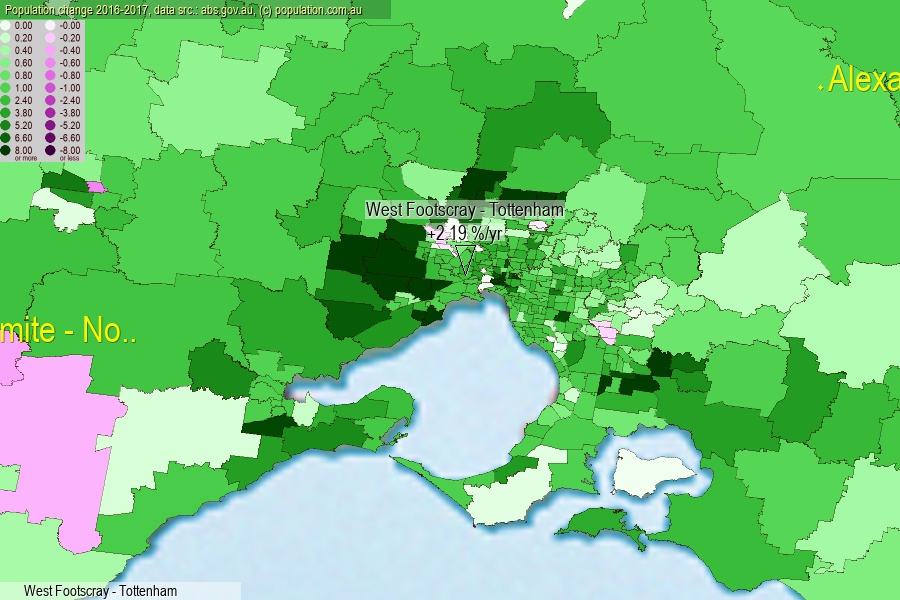 population.com.au
population.com.auLast official estimated population of West Footscray - Tottenham (as Statistical Area Level 2) was 12 322 people (on 2017-06-30)[2]. This was 0.05% of total Australian population and 0.192% of VIC population. Area of West Footscray - Tottenham is 6.00 km², in this year population density was 2 053.67 p/km² . If population growth rate would be same as in period 2016-2017 (+2.19%/yr), West Footscray - Tottenham population in 2025 would be 14 653. [0]



Click to enlarge. West Footscray - Tottenham is located in the center of the images.
Population [people], population density [p./km²] and population change [%/year] [2]
View borders » (new window) [4]
[1991-1992] -0.11 %/Yr.
[1992-1993] -1.28 %/Yr.
[1993-1994] -0.78 %/Yr.
[1994-1995] -0.38 %/Yr.
[1995-1996] -0.36 %/Yr.
[1996-1997] -0.84 %/Yr.
[1997-1998] -1.23 %/Yr.
[1998-1999] -0.62 %/Yr.
[1999-2000] -0.15 %/Yr.
[2000-2001] -0.50 %/Yr.
[2001-2002] -0.06 %/Yr.
[2002-2003] +0.24 %/Yr.
[2003-2004] +0.55 %/Yr.
[2004-2005] +1.10 %/Yr.
[2005-2006] +1.64 %/Yr.
[2006-2007] +1.53 %/Yr.
[2007-2008] +2.29 %/Yr.
[2008-2009] +1.49 %/Yr.
[2009-2010] +0.40 %/Yr.
[2010-2011] -0.28 %/Yr.
[2011-2012] +2.36 %/Yr.
[2012-2013] +2.32 %/Yr.
[2013-2014] +2.74 %/Yr.
[2014-2015] +2.79 %/Yr.
[2015-2016] +1.76 %/Yr.
[2016-2017] +2.19 %/Yr.
[0] Calculated with linear interpolation from officially estimated population
[1] Read more about SA2 and Australian Statistical Geography Standard (ASGS) on abs.gov.au
[2] Population data from Australian Bureau of Statistics (Population and density: 2017; change: 2016-2017)
[3] Digital Boundaries: Australian Statistical Geography Standard (ASGS) 2016.
[4] Border coordinates are simplifyed using Ramer-Douglas-Peucker algorithm.